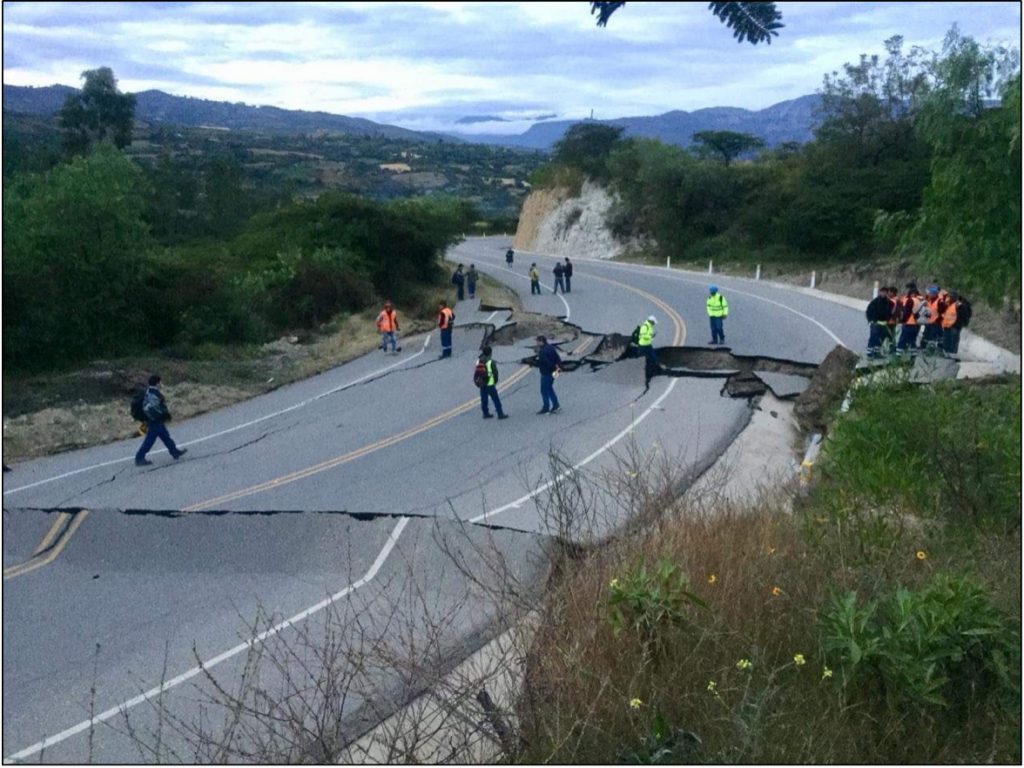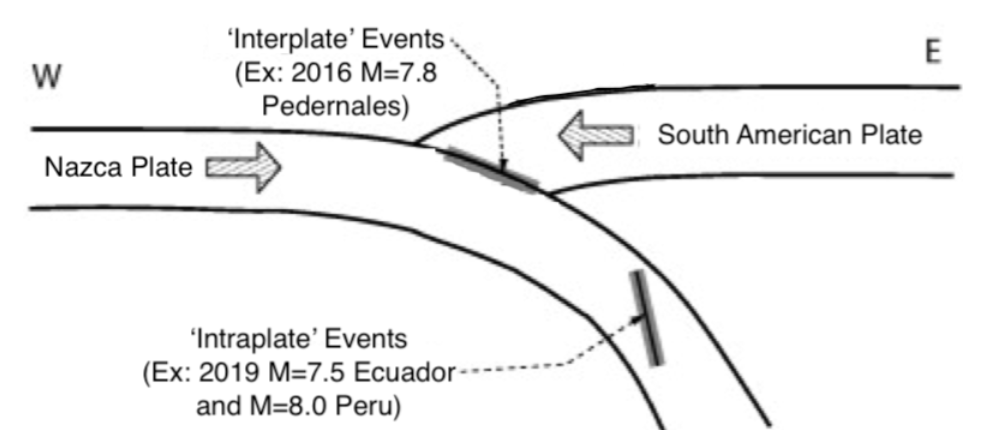Tiegan Hobbs, Ph.D., Postdoctoral Seismic Risk Scientist (@THobbsGeo)
A magnitude-8.0 quake shook deep below the Amazon Rainforest in Peru, causing extensive liquefaction and shaking from Colombia to Chile.
Citation: Tiegan Hobbs (2019), Deep earthquake in Peru is felt along the length of South America: More to follow?, Temblor, http://doi.org/10.32858/temblor.024
A powerful Mw 8.0 earthquake shook Peru at 2:41 a.m. local time on Sunday, May 26, 2019, from an epicenter within the Reserva Nacional Pacaya-Samiria of the Amazon Rainforest. Although it was felt from Colombia to Chile, this deep event (about 110 kilometers) did not generate a tsunami and only two casualties have been reported (AP). At least 26 people are injured in Peru and Ecuador. Casualties were limited due to the remote location of the epicenter and the depth of the quake.

Damage and liquefaction expected in the Amazon

The United States Geological Survey (USGS) now routinely produces maps of probable landslide and liquefaction. According to the shaking and topography of the area, this event is predicted to cause widespread and/or severe liquefaction affecting approximately 74,000 people. It is not predicted to cause an extensive landslide, though aerial surveys showed at least one landslide in the jungle.

Peru resident Cristina Andrade (@crisanris) reported road damage due to ground displacements from this event and aerial photography shows a landslide in the lush jungles of this region (Reuters). Little information has emerged about the extent of the destruction, despite incoming footage from the firefighters of Peru (@BomberosPE) showing rubble lining the streets of Yurimaguas, the town nearest the epicenter, in Alto Amazonas. Emergency teams and politicians have been converging on the affected areas to lead the response.

Not the first deep earthquake in this area
Events like this one, which occur deep within Earth’s crust and rupture under extensional forces, are different than usual subduction zone earthquakes. This earthquake occurred entirely within the subducting Nazca Plate, which is being pulled apart as it is sucked deeper into Earth’s mantle. We call this type of earthquake an “intraplate event: occurring within the plate. More often, subduction zone earthquakes are “interplate” events, in which earthquakes occur on the boundary between two plates. These events, like the 2016 M=7.8 earthquake in Pedernales, Ecuador (http://temblor.net/earthquake-insights/ecuador-earthquakes-what-happened-and-what-is-next-986/), tend to be shallower and therefore are closer to population centers and the ocean floor. They’re thus more likely to cause tsunamis and significant damage.

Questions may arise as to whether Sunday’s Mw 8.0 earthquake in Peru was related to a February Mw 7.5 event in Ecuador. That event was also a deep, extensional intraplate quake. While these two earthquakes were very similar and happened within a few months of one another, they were upwards of 400 kilometers apart. Therefore, the static stress change from the February event was too small to have triggered Sunday’s event.
Sunday’s quake, like most deep earthquakes, is likely to be relatively depleted in aftershocks [e.g. Wiens & McGuire, 1995]. So far, no events with magnitude greater than 2.5 have been reported by the USGS for that area.
References
pic.twitter.com/miV5ak8Gf6
pic.twitter.com/3bFW9JqfE9
USGS Event Pages
https://earthquake.usgs.gov/earthquakes/eventpage/us60003sc0/executive
(https://earthquake.usgs.gov/earthquakes/eventpage/us60003sc0/ground-failure/summary
https://earthquake.usgs.gov/earthquakes/eventpage/us2000jlfv/executive
Leyton, F., Ruiz, J., Campos, J., & Kausel, E. (2009). Intraplate and interplate earthquakes in Chilean subduction zone: A theoretical and observational comparison. Physics of the Earth and Planetary interiors, 175(1-2), 37-46.
Wiens, D. A., & McGuire, J. J. (1995). The 1994 Bolivia and Tonga events: Fundamentally different types of deep earthquakes?. Geophysical research letters, 22(16), 2245-2248.
Other News Sources
https://www.eluniversal.com.mx/english/magnitude-8-earthquake-hits-peru (Reuters)
https://www.apnews.com/3b12f5abea604f19a5ad36d700d090b1 (AP)
- Earthquake science illuminates landslide behavior - June 13, 2025
- Destruction and Transformation: Lessons learned from the 2015 Gorkha, Nepal, earthquake - April 25, 2025
- Knock, knock, knocking on your door – the Julian earthquake in southern California issues reminder to be prepared - April 24, 2025
